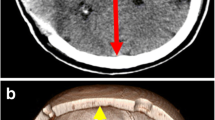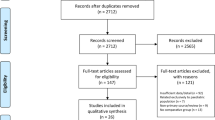Abstract
Purpose of Review
Decompressive craniectomy (DC) is a life-saving procedure performed in refractory intracranial pressure increase and mass lesion due to severe traumatic brain injury (TBI). Cranioplasty primarily intends to maintain cerebral protection and reconstruct aesthetic appearance. Also, cranioplasty can enable neurological rehabilitation and potentially augment neurological recovery. This article reviews recent studies on the effect of cranioplasty on neurological recovery in severe TBI.
Recent Findings
Recent findings suggested that cranioplasty has the potential to enhance neurological recovery after severe TBI. Cranioplasty may alleviate cognitive and functional deficits by reinstating the regular cerebrospinal fluid dynamics and improving brain perfusion. Analyses on the effects of cranioplasty timing on neurological recovery likely favor early cranioplasty. Also, materials used during cranioplasty, autologous and exogenous, were suggested to have similar effects in recovery.
Summary
Although neurological therapy of TBI patients is still a serious challenge, recent findings represent the possible enhancing effect of cranioplasty on neurological recovery.
Similar content being viewed by others
References
Papers of particular interest, published recently, have been highlighted as: • Of importance •• Of major importance
• Hutchinson PJ, Kolias AG, Tajsic T, Adeleye A, Aklilu AT, Apriawan T, et al. Consensus statement from the International Consensus Meeting on the Role of Decompressive Craniectomy in the Management of Traumatic Brain Injury: Consensus statement. Acta Neurochir (Wien). 2019;161:1261–74 This presents the recent consensus-based recommendations for the decompressive craniectomy in the management of traumatic brain injury.
Heegaard W, Biros M. Traumatic brain injury. Emerg Med Clin North Am. 2007;25:655–78.
Hawryluk GWJ, Rubiano AM, Totten AM, O’Reilly C, Ullman JS, Bratton SL, et al. Guidelines for the management of severe traumatic brain injury: 2020 update of the decompressive craniectomy recommendations. Neurosurgery. 2020;87:427–34.
Cooper DJ, Rosenfeld JV, Murray L, Arabi YM, Davies AR, D’Urso P, et al. Decompressive craniectomy in diffuse traumatic brain injury. N Engl J Med. 2011;364:1493–502.
Barthélemy EJ, Melis M, Gordon E, Ullman JS, Germano IM. Decompressive craniectomy for severe traumatic brain injury: a systematic review. World Neurosurg. 2016;88:411–20.
Münch E, Horn P, Schürer L, Piepgras A, Paul T, Schmiedek P. Management of severe traumatic brain injury by decompressive craniectomy. Neurosurgery. 2000;47:315–23.
Giammattei L, Messerer M, Cherian I, Starnoni D, Maduri R, Kasper EM, et al. Current perspectives in the surgical treatment of severe traumatic brain injury. World Neurosurg. 2018;116:322–8.
Yue JK, Rick JW, Deng H, Feldman MJ, Winkler EA. Efficacy of decompressive craniectomy in the management of intracranial pressure in severe traumatic brain injury. J Neurosurg Sci. 2019;63:425–40.
Hutchinson PJ, Kolias AG, Timofeev IS, Corteen EA, Czosnyka M, Timothy J, et al. Trial of decompressive craniectomy for traumatic intracranial hypertension. N Engl J Med. 2016;375:1119–30.
Cooper DJ, Rosenfeld JV, Murray L, Arabi YM, Davies AR, Ponsford J, et al. Patient outcomes at twelve months after early decompressive craniectomy for diffuse traumatic brain injury in the randomized DECRA clinical trial. J Neurotrauma. 2020;37:810–6.
Iaccarino C, Kolias AG, Roumy LG, Fountas K, Adeleye AO. Cranioplasty following decompressive craniectomy. Front Neurol. 2020;10:1357.
Piazza M, Grady MS. Cranioplasty. Neurosurg Clin N Am. 2017;28:257–65.
•• Shahid AH, Mohanty M, Singla N, Mittal BR, Gupta SK. The effect of cranioplasty following decompressive craniectomy on cerebral blood perfusion, neurological, and cognitive outcome. J Neurosurg. 2018;128:229–35 This meta-analysis represents a detailed review of the literature that analyzed the effect of cranioplasty on cerebral blood flow, functional, and cognitive outcome.
Nasi D, Dobran M. Can early cranioplasty reduce the incidence of hydrocephalus after decompressive craniectomy? A meta-analysis. Surg Neurol Int. 2020;11:94.
•• Malcolm JG, Rindler RS, Chu JK, Chokshi F, Grossberg JA, Pradilla G, et al. Early cranioplasty is associated with greater neurological improvement a systematic review and meta-analysis. Clin Neurosurg. 2018;82:278–88 This meta-analysis reports a detailed review of the literature that analyzed the effect of cranioplasty on neurological recovery and the association of the cranioplasty timing with differences in neurological outcomes.
Bender A, Heulin S, Röhrer S, Mehrkens JH, Heidecke V, Straube A, et al. Early cranioplasty may improve outcome in neurological patients with decompressive craniectomy. Brain Inj. 2013;27:1073–9.
Jasey N, Ward I, Lequerica A, Chiaravalloti ND. The therapeutic value of cranioplasty in individuals with brain injury. Brain Inj. 2018;32:318–24.
Andrews BT, Barbay S, Townsend J, Detamore M, Harris J, Tuchek C, et al. Unrepaired decompressive craniectomy worsens motor performance in a rat traumatic brain injury model. Sci Rep. 2020;10:22242.
• Plog BA, Lou N, Pierre CA, Cove A, Kenney M, Hitomi E, et al. When the air hits your brain: decreased arterial pulsatility after craniectomy leads to impaired glymphatic flow. J Neurosurg. 2020;585:1–14 This study represents a recent hypothesis that decompressive craniectomy may induce glymphatic circulation disruption preceded inflammatory response and results in decreased neurological capacity.
Waziri A, Fusco D, Mayer SA, McKhann GM, Connolly ES. Postoperative hydrocephalus in patients undergoing decompressive hemicraniectomy for ischemic or hemorrhagic stroke. Neurosurgery. 2007;61:489–93.
Upton ML, Weller RO. The morphology of cerebrospinal fluid drainage pathways in human arachnoid granulations. J Neurosurg. 2009;63:867–75.
Brinker T, Stopa E, Morrison J, Klinge P. A new look at cerebrospinal fluid circulation. Fluids Barriers CNS. 2014;11:10.
Bulat M, Klarica M. Recent insights into a new hydrodynamics of the cerebrospinal fluid. Brain Res Rev. 2011;65:99–112.
Wen L, Lou HY, Xu J, Wang H, Huang X, Gong JB, et al. The impact of cranioplasty on cerebral blood perfusion in patients treated with decompressive craniectomy for severe traumatic brain injury. Brain Inj. 2015;29:1654–60.
Rynkowski CB, Robba C, Loreto M, Theisen ACW, Kolias AG, Finger G, et al. Effects of cranioplasty after decompressive craniectomy on neurological function and cerebral hemodynamics in traumatic versus nontraumatic brain injury. Acta Neurochir Suppl. 2021;131:79–82.
Annan M, De Toffol B, Hommet C, Mondon K. Sinking skin flap syndrome (or syndrome of the trephined): a review. Br J Neurosurg. 2015;29:314–8.
Stiver SI, Wintermark M, Manley GT. Reversible monoparesis following decompressive hemicraniectomy for traumatic brain injury. J Neurosurg. 2008;109:245–54.
Winkler PA, Stummer W, Linke R, Krishnan KG, Tatsch K. Influence of cranioplasty on postural blood flow regulation, cerebrovascular reserve capacity, and cerebral glucose metabolism. J Neurosurg. 2000;93:53–61.
Sakamoto S, Eguchi K, Kiura Y, Arita K, Kurisu K. CT perfusion imaging in the syndrome of the sinking skin flap before and after cranioplasty. Clin Neurol Neurosurg. 2006;108:583–5.
Woo PYM, Mak CHK, Mak HKF, Tsang ACO. Neurocognitive recovery and global cerebral perfusion improvement after cranioplasty in chronic sinking skin flap syndrome of 18 years: case report using arterial spin labelling magnetic resonance perfusion imaging. J Clin Neurosci. 2020;77:213–7.
• Zhao YH, Gao H, Ma C, Huang WH, Pan ZY, Wang ZF, et al. Earlier cranioplasty following posttraumatic craniectomy is associated with better neurological outcomes at one-year follow-up: a two-centre retrospective cohort study. Br J Neurosurg. Online ahead of print. Accessed on 01/06/2021 at https://doi.org/10.1080/02688697.2020.1853042. This recent two-centered retrospective cohort study presents the analysis of neurological outcomes after different timings of cranioplasty in patients with severe traumatic brain injury.
Kim JH, Ahn JH, Oh JK, Song JH, Park SW, Chang IB. Factors associated with the development and outcome of hydrocephalus after decompressive craniectomy for traumatic brain injury. Neurosurg Rev. 2021;44:471–8.
Su TM, Lan CM, Lee TH, Hsu SW, Tsai NW, Lu CH. Risk factors for the development of posttraumatic hydrocephalus after unilateral decompressive craniectomy in patients with traumatic brain injury. J Clin Neurosci. 2019;63:62–7.
Nasi D, Gladi M, Di Rienzo A, Somma L, Moriconi E, Iacoangeli M. Risk factors for post-traumatic hydrocephalus following decompressive craniectomy. Acta Neurochir (Wien). 2018;160:1691–8.
Ozoner B, Kilic M, Aydin L, Aydin S, Arslan YK, Musluman AM, et al. Early cranioplasty associated with a lower rate of post-traumatic hydrocephalus after decompressive craniectomy for traumatic brain injury. Eur J Trauma Emerg Surg. 2020;46:919–26.
Takahashi Y. Withdrawal of shunt systems - clinical use of the programmable shunt system and its effect on hydrocephalus in children. Childs Nerv Syst. 2001;17:472–7.
Song J, Liu M, Mo X, Du H, Huang H, Xu GZ. Beneficial impact of early cranioplasty in patients with decompressive craniectomy: evidence from transcranial Doppler ultrasonography. Acta Neurochir (Wien). 2014;156:193–8.
Posti JP, Yli-Olli M, Heiskanen L, Aitasalo KMJ, Rinne J, Vuorinen V, et al. Cranioplasty after severe traumatic brain injury: effects of trauma and patient recovery on cranioplasty outcome. Front Neurol. 2018;9:223.
Yao Z, Hu X, You C. The incidence and treatment of seizures after cranioplasty: a systematic review and meta-analysis. Br J Neurosurg. 2018;32:489–94.
Xu H, Niu C, Fu X, Ding W, Ling S, Jiang X, et al. Early cranioplasty vs. late cranioplasty for the treatment of cranial defect: a systematic review. Clin Neurol Neurosurg. 2015;136:33–40.
Malcolm JG, Rindler RS, Chu JK, Grossberg JA, Pradilla G, Ahmad FU. Complications following cranioplasty and relationship to timing: a systematic review and meta-analysis. J Clin Neurosci. 2016;33:39–51.
Zheng F, Xu H, von Spreckelsen N, Stavrinou P, Timmer M, Goldbrunner R, et al. Early or late cranioplasty following decompressive craniotomy for traumatic brain injury: a systematic review and meta-analysis. J Int Med Res. 2018;46:2503–12.
Kim JH, Hwang SY, Kwon TH, Chong K, Yoon WK, Kim JH. Defining “early” cranioplasty to achieve lower complication rates of bone flap failure: resorption and infection. Acta Neurochir (Wien). 2019;161:25–31.
Wachter D, Reineke K, Behm T, Rohde V. Cranioplasty after decompressive hemicraniectomy: underestimated surgery-associated complications? Clin Neurol Neurosurg. 2013;115:1293–7.
Henry J, Amoo M, Murphy A, O’Brien DP. Complications of cranioplasty following decompressive craniectomy for traumatic brain injury: systematic review and meta-analysis. Acta Neurochir (Wien). 2021;163:1423–35.
Shepetovsky D, Mezzini G, Magrassi L. Complications of cranioplasty in relationship to traumatic brain injury: a systematic review and meta-analysis. Neurosurg Rev. Online ahead of print. Published online on 08/03/2021. Accessed on 01/06/2021 at https://doi.org/10.1007/s10143-021-01511-7.
Zanotti B, Zingaretti N, Verlicchi A, Robiony M, Alfieri A, Parodi PC. Cranioplasty: review of materials. J Craniofac Surg. 2016;27:2061–72.
Lethaus B, Bloebaum M, Essers B, Ter Laak MP, Steiner T, Kessler P. Patient-specific implants compared with stored bone grafts for patients with interval cranioplasty. J Craniofac Surg. 2014;25:206–9.
Iaccarino C, Viaroli E, Fricia M, Serchi E, Poli T, Servadei F. Preliminary results of a prospective study on methods of cranial reconstruction. J Oral Maxillofac Surg. 2015;73:2375–8.
Piitulainen JM, Kauko T, Aitasalo KMJ, Vuorinen V, Vallittu PK, Posti JP. Outcomes of cranioplasty with synthetic materials and autologous bone grafts. World Neurosurg. 2015;83:708–14.
Schwarz F, Dünisch P, Walter J, Sakr Y, Kalff R, Ewald C. Cranioplasty after decompressive craniectomy: is there a rationale for an initial artificial bone-substitute implant? A single-center experience after 631 procedures. J Neurosurg. 2016;124:710–5.
Honeybul S, Morrison DA, Ho KM, Lind CRP, Geelhoed E. A randomized controlled trial comparing autologous cranioplasty with custom-made titanium cranioplasty. J Neurosurg. 2017;126:81–90.
Kim SH, Kang DS, Cheong JH, Kim JH, Song KY, Kong MH. Comparison of complications following cranioplasty using a sterilized autologous bone flap or polymethyl methacrylate. Korean J Neurotrauma. 2017;13:15–23.
Moles A, Heudes PM, Amelot A, Cristini J, Salaud C, Roualdes V, et al. Long-term follow-up comparative study of hydroxyapatite and autologous cranioplasties: complications, cosmetic results, osseointegration. World Neurosurg. 2018;111:e395-402.
Malcolm JG, Mahmooth Z, Rindler RS, Allen JW, Grossberg JA, Pradilla G, et al. Autologous cranioplasty is associated with increased reoperation rate: a systematic review and meta-analysis. World Neurosurg. 2018;116:60–8.
Sharma R, Janjani L, Kulkarni V, Patrikar S, Singh S. Therapeutic efficacy of cranioplasty after decompressive craniectomy for traumatic brain injury: a retrospective study. J Oral Maxillofac Surg. 2018;76:2423.e1-e7.
Author information
Authors and Affiliations
Corresponding author
Ethics declarations
Conflict of Interest
Authors declare no conflict of interest.
Human and Animal Rights and Informed Consent
This review does not contain any studies with human or animal subjects performed by the author.
Additional information
Publisher's Note
Springer Nature remains neutral with regard to jurisdictional claims in published maps and institutional affiliations.
This article is part of the Topical Collection on Neurotrauma
Rights and permissions
About this article
Cite this article
Ozoner, B. Cranioplasty Following Severe Traumatic Brain Injury: Role in Neurorecovery. Curr Neurol Neurosci Rep 21, 62 (2021). https://doi.org/10.1007/s11910-021-01147-6
Accepted:
Published:
DOI: https://doi.org/10.1007/s11910-021-01147-6




